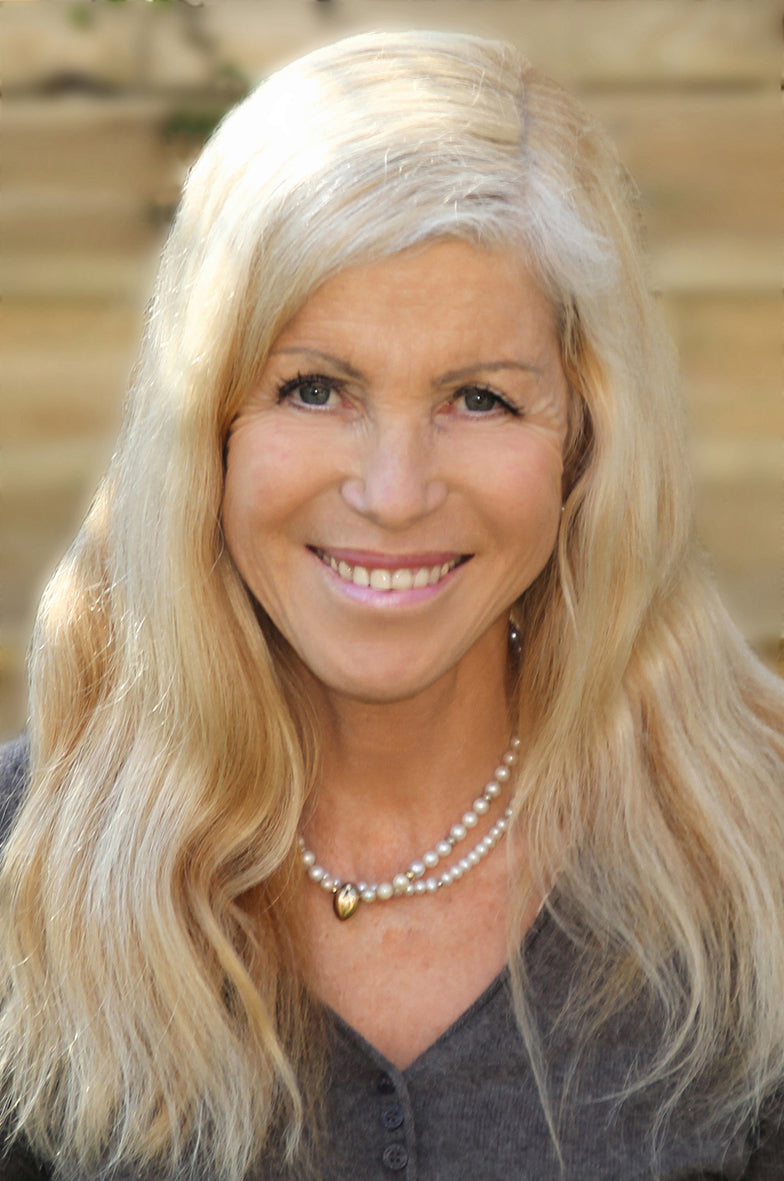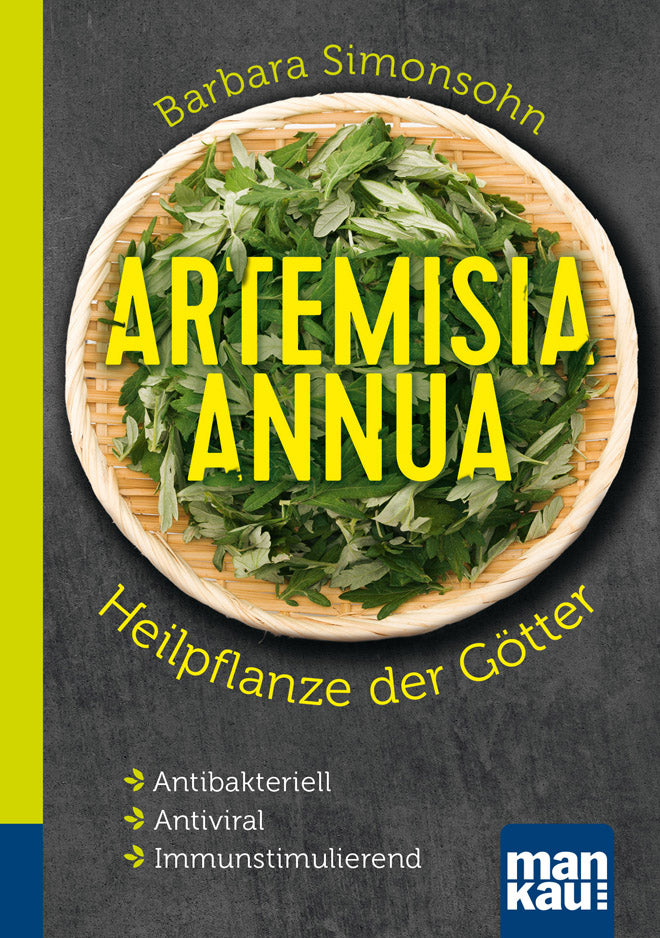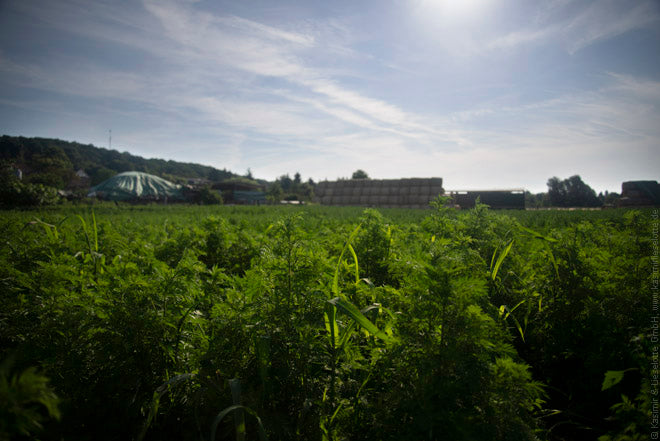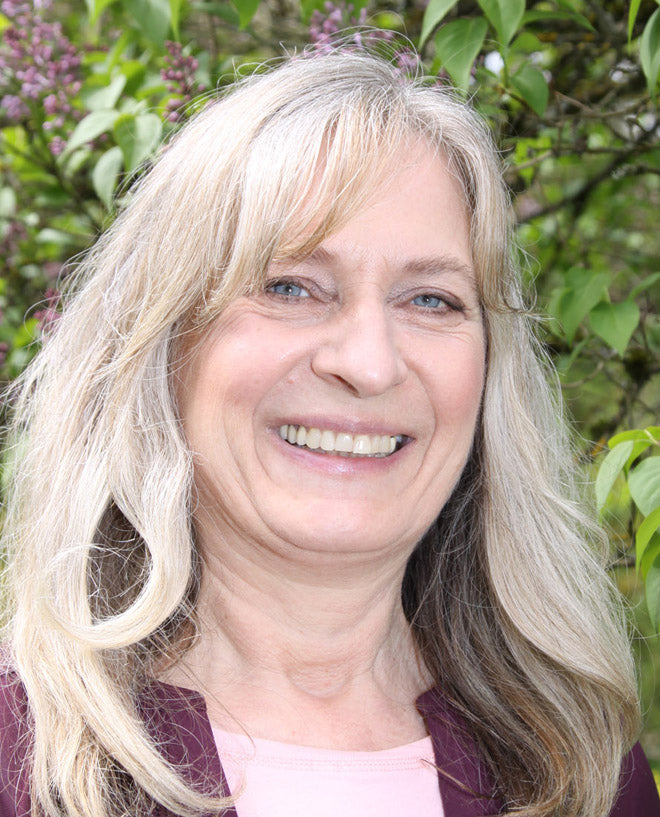
Barbara Simonsohn: "Artemisia annua is a multi-purpose weapon in natural medicine"
Barbara Simonsohn: "Artemisia annua is a multi-purpose weapon in natural medicine"
"The Chinese have known Artemisia annua as a medicinal plant for more than 2,000 years. They have traditionally used it to treat fever, probably also malaria, to expel worms, diarrhoea, inflammation, infections and to generally strengthen the immune system." Barbara Simonsohn , health expert and author of the compact guide "Artemisia annua" , reports in an interview about the amazing healing power of the plant Artemisia annua (annual mugwort), which is not only an important remedy for malaria, but is now also used for cancer, Lyme disease, hepatitis, herpes and bacterial infections.
After your books on chia , moringa, hemp, AFA algae, barley grass juice and baobab fruit powder, you had enough of “superfood”. What motivated you to now write a guide on the “miracle plant” Artemisia annua?
Barbara Simonsohn: The healing power of the plant is enormous. If a plant can even cure malaria – artemisinin is the malaria drug in combination with another herb from traditional Chinese medicine, and in 2015 the Nobel Prize in Medicine was awarded for its discovery – then it must be good for many other things too. And I found what I was looking for. Cancer, Lyme disease, hepatitis, herpes, bacterial infections – Artemisia annua is really a multi-purpose weapon in natural medicine, useful for everything.
Until a few years ago, annual mugwort was hardly known in our country. How did the rediscovery of this medicinal plant, which has been used in traditional Chinese medicine for over 2,000 years, come about?
Barbara Simonsohn: The decisive factor was probably the PR boost from the awarding of the Nobel Prize to the Chinese researcher Tu Youyou. Dr. Tu made this discovery in 1969 during the Vietnam War, when the Vietcong asked big brother China to search through old recipes for an anti-malaria drug because soldiers were dying of malaria like flies. But even before the Nobel Prize was awarded, some companies were working with Artemisia, and Martin Hirt from "anamed" has been pursuing cultivation projects for decades, focusing on sub-Saharan Africa, but also in European countries, with great success and the approach: the whole is more than the sum of its parts. Instead of isolating and patenting a substance, it makes more sense to use the whole plant because there are synergistic effects of the individual ingredients, for example the approximately 400 bioactive substances with anti-cancer effects. Also worth mentioning is the "Artemisia woman" Hannelore Klades in Kassel, ninety years old, who enjoys radiant health thanks to Artemisia and looks after medicinal plant gardens in sub-Saharan Africa to make people there independent of unaffordable pharmaceuticals. Like me, she has written two books about the plant.
For which ailments and diseases is Artemisia traditionally used, and what medical surprises can be expected in the future?
Barbara Simonsohn: The Chinese have known Artemisia annua as a medicinal plant for more than 2,000 years. They have traditionally used it to treat fever, probably also malaria, to expel worms, diarrhoea, inflammation, infections and to generally strengthen the immune system. The "bitter" taste is very important in TCM because it combats mucus in the body, strengthens the digestive organs and brings the body and the psyche into a state of harmony and balance. Due to climate change, insects such as tiger mosquitoes and sand flies could become native to our country in the future - they have already been spotted in isolated cases in Bavaria and the Freiburg area - and transmit dangerous infectious diseases such as leishmaniasis. The same applies to carriers of plasmodia, which cause tropical malaria. Many refugees who come to us are immune to tropical infectious diseases such as malaria, but can carry pathogens. We have not yet been able to develop this immunity. If a normal mosquito bites someone who is carrying plasmodia without contracting malaria themselves, this mosquito can infect someone else who has no immunity. I have described in my Artemisia books that this is not just a theory, but is already happening here.
Artemisia annua is said to contain over 600 biologically active ingredients, including protein and healthy fatty acids as well as valuable trace elements. Why are these so important and what is the advantage over other nutrient sources?
Barbara Simonsohn: Artemisia has been researched quite well, but there is still room for improvement. The exact effect of the individual essential oils, flavonoids and essential fatty acids has not yet been fully unraveled, but it is proven that they have a strengthening effect on our organism. Many studies focus on just one substance, rather than looking at the entire plant. There are still relatively few human studies. The ORAC value, which indicates the antioxidant potential, is sensationally high at 72,820, world class, comparable only to Moringa oleifera. Our local antioxidant star, the blueberry, has an ORAC value of "only" 2,630, while pomegranates have 46,000. Artemisia annua is a very original plant that has not been bred very much. This probably explains its outstanding effect against free radicals. I see the greatest health potential in the high concentration of vitamin E as a brain protector and immune booster, the boron content with the potential to prevent and cure arthritis, the amount of flavonoids such as artemetin, the more than 20 essential fatty acids such as camphor, sesquiterpenes such as artemisinin, the volatile oils such as alpha-pinene, which are particularly popular in connection with forest bathing. Artemisia annua can, without exaggeration, be considered a "fire extinguisher for free radicals". The plant naturally has not only healing effects, but also prophylactic effects against many diseases.
Current studies show that Artemisia annua can be used not only to fight serious diseases such as cancer, but also preventively to strengthen the immune system. What do you think are the most important areas of application?
Barbara Simonsohn: The focus is obviously on strengthening our immune system, but also on activating our self-healing powers. Paracelsus spoke of the "inner doctor". With the help of the ingredients of this medicinal plant, such as the Nobel Prize-winning artemisinin, the immune system is able to destroy borrelia and cancer cells, but also viruses, pathological bacteria - gram-positive and gram-negative -, single-celled organisms and worms. The artemisia ointment, which you can easily make yourself, is also known in Switzerland as the "healing world ointment" because it helps with almost all skin problems, whether eczema or insect bites. If you don't make your own natural cosmetics, you can use products from the company "Kasimir & Lieselotte", for example.
Originally native to tropical regions, Artemisia annua now grows here as a wild plant or in gardens. What should you pay particular attention to when growing it yourself, and which parts of the plant can be used as a medicinal remedy?
Barbara Simonsohn: It is a testament to the vitality of this plant that it has been able to conquer all continents and climate zones - except for the eternal ice. Unlike Moringa, Artemisia is easy to grow in your own garden. Only the leaves contain the ingredients and healing properties discussed in the book. To ensure that they have the optimal nutrient density, they should be harvested shortly before they flower and dried at 30 degrees, in the oven with a wooden spoon in the door or in a dehydrator with temperature control. A plant is left to flower in order to obtain seeds for the next year - and to give as gifts! The taste of the leaves is very bitter and takes some getting used to. You can make tea from the leaves or grind them in a coffee grinder and stir them into sweetened yoghurt, for example. Artemisia is a plant that relieves us of worries about many diseases and, in my opinion, is a first-class health elixir.
Book tip:
Barbara Simonsohn: Artemisia annua – medicinal plant of the gods (compact guide). Antibacterial – antiviral – immune stimulating. Mankau Verlag 2018, paperback, full color, 11.5 x 16.5 cm, 127 pages, 8.99 euros (D) / 9.20 euros (A), ISBN 978-3-86374-474-8.
Link recommendations:
More information about the book "Artemisia annua"
To the reading sample in PDF format
More about the author Barbara Simonsohn











